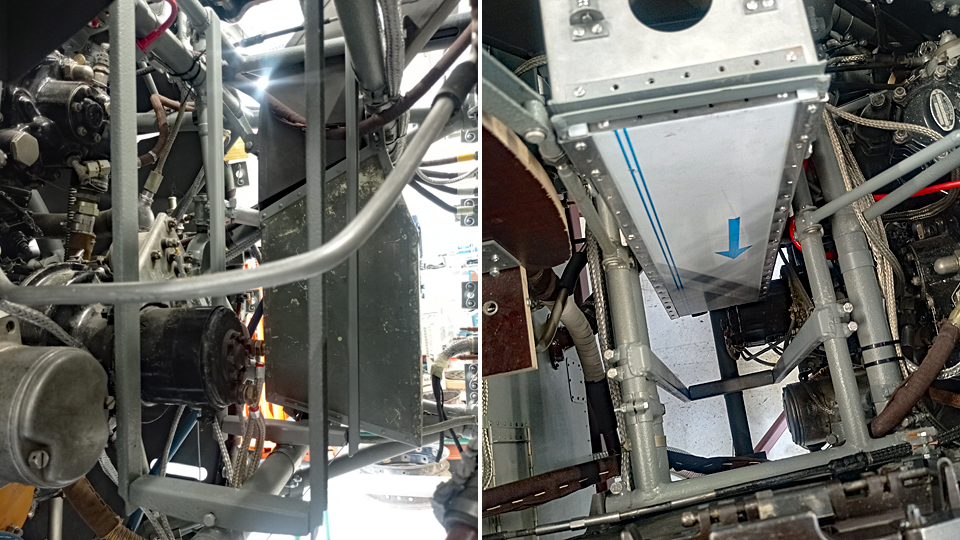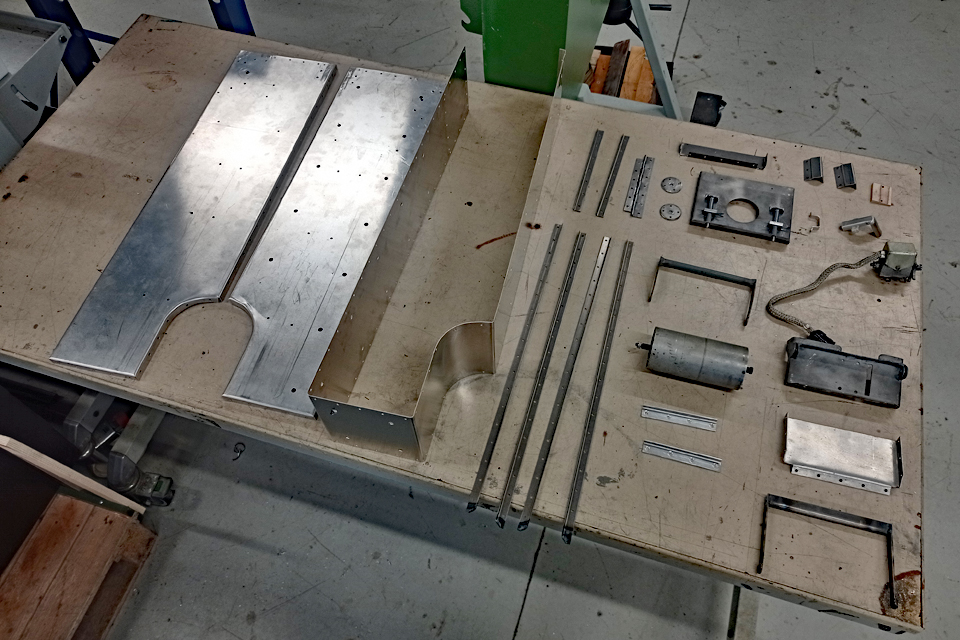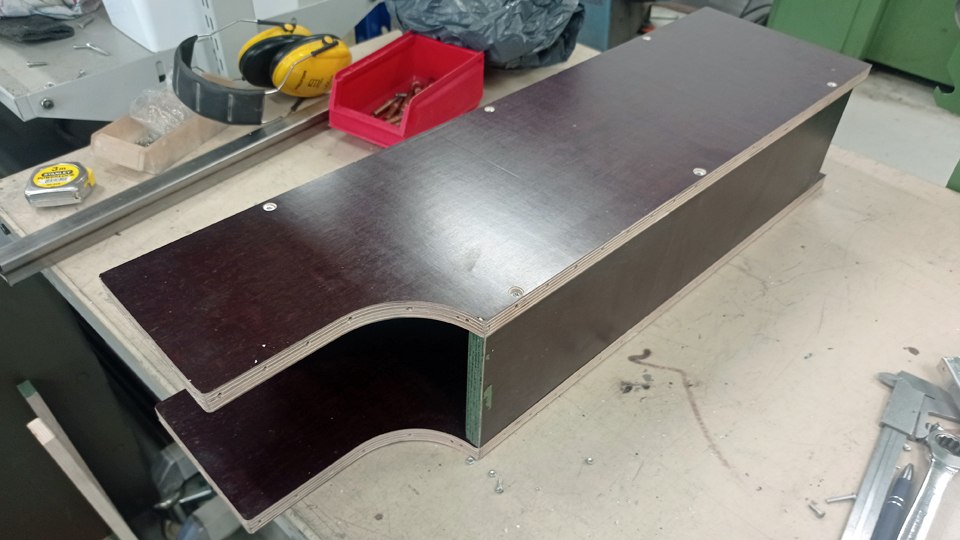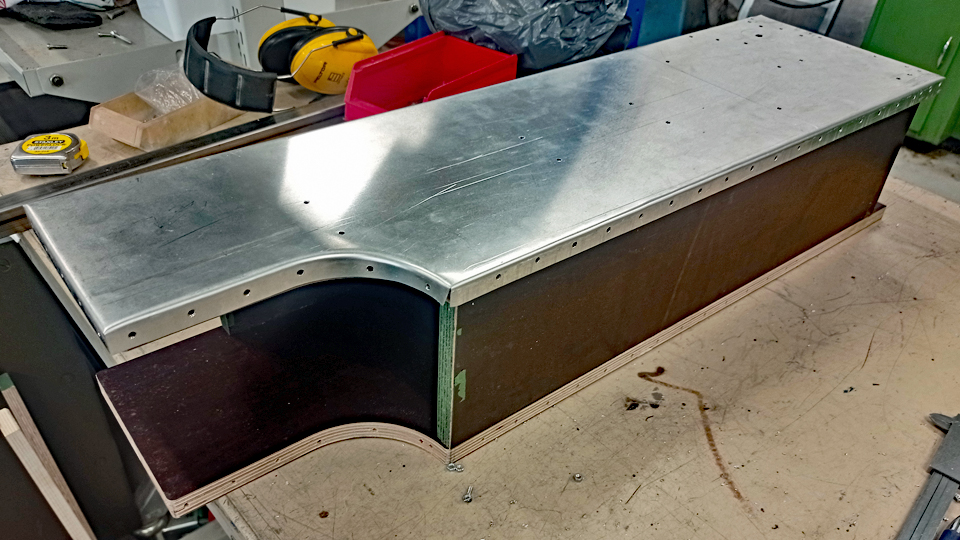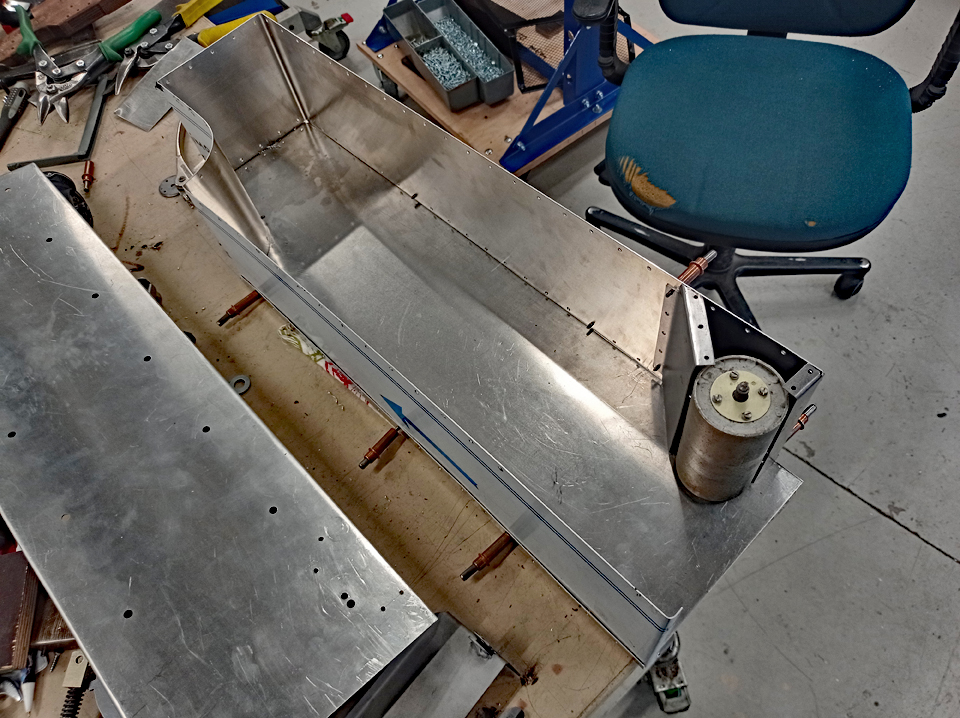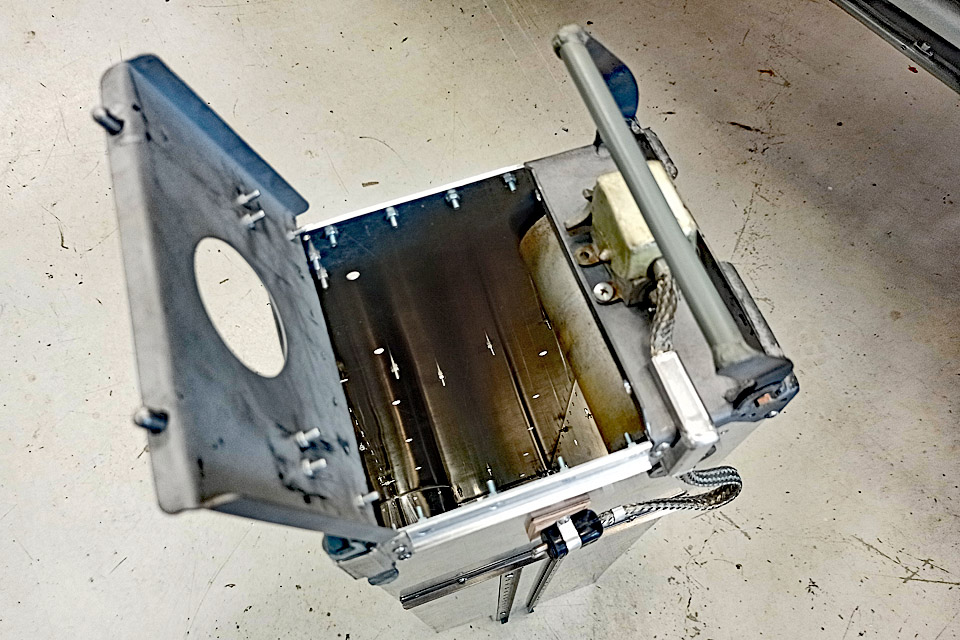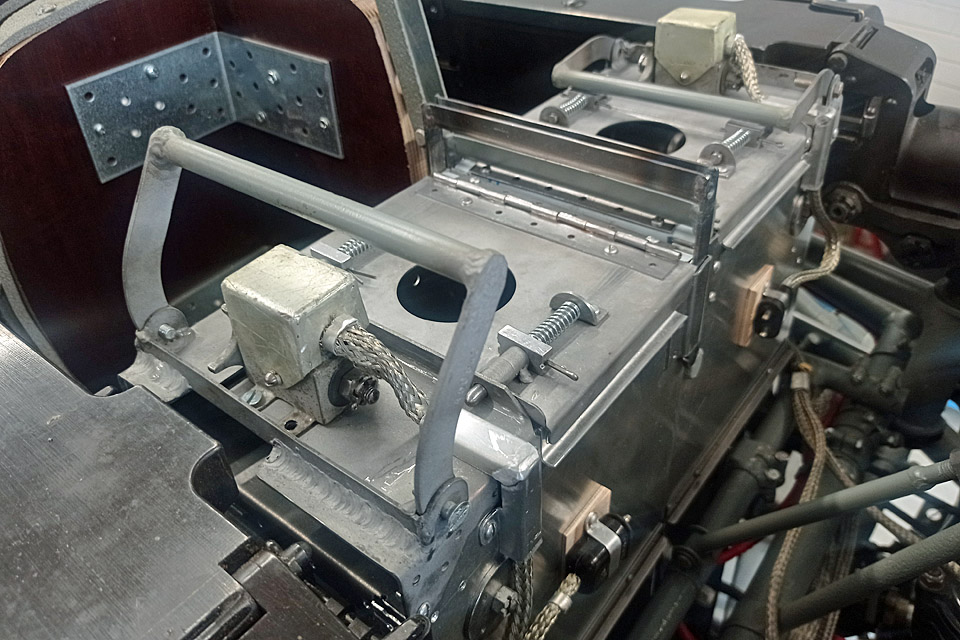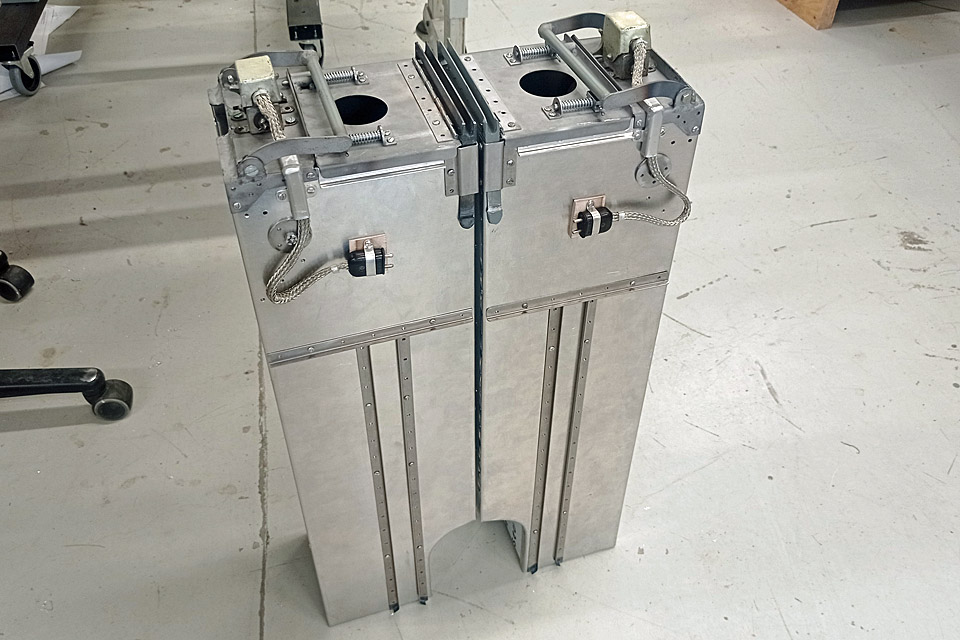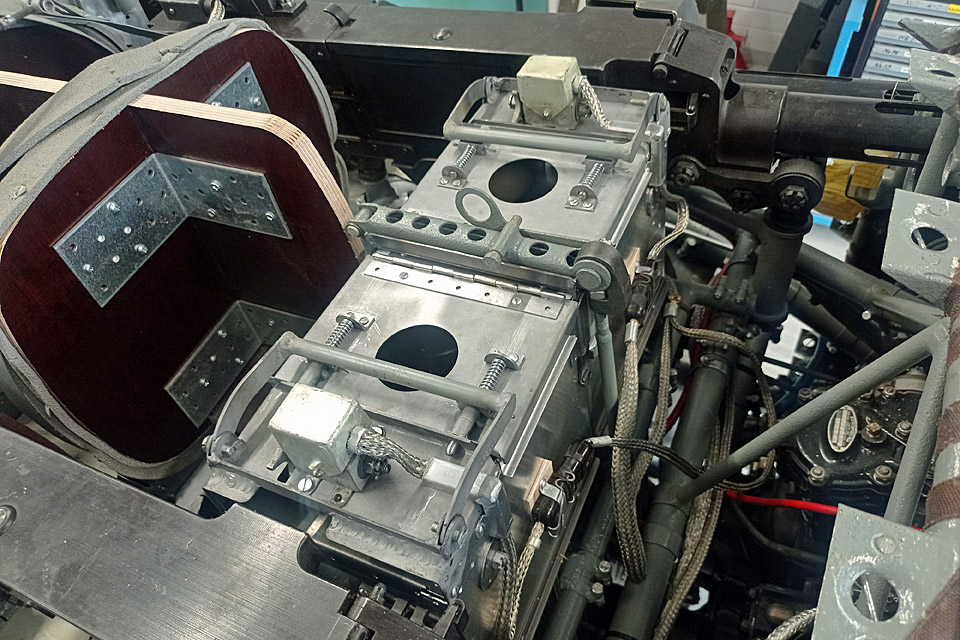MY-14 midmost machine guns got caissonsKeskiviikko 12.4.2023 - Mika Rautasaari and Reino Myllymäki The VL Myrsky II had four heavy VKT 12,7 LLk/42-machine guns in the upper half of the forward fuselage. The machine guns were copies of 13,2 mm FN-machine guns, as the result of Swedish-Finnish illegal co-operation. They had been adjusted to the 12,7x99 NATO cartridges, which were already in use in Finland in the Brewster 239 fighters’ Colt MG 53-machine guns. Of the four machine guns, the caissons for the two midmost ones housed 220 rounds each. For the MY-14 restoration, it was a key issue that the innermost caissons, nor the mounting rails for the starboard one, hadn’t survived. However, the mounting rails for the port caisson were found, as was the lower support. Apart from that, the electric ammunition counters and the ammunition belt feeders’ guiding steel rolls, which had remained in the feeding chutes of all the three of Myrsky’s lateral machine guns, could be found.
The original port side mounting rails and the lower support were blasted free of rust with glass balls, covered with Isotrol and painted grey. For the starboard side, new rails and the lower support were manufactured from steel according to the original blueprints. The lower support has threaded elevation adjustment.
The sides of the caissons were cut for us from 1 mm aluminium sheet with laser to the measurements in the blueprints, as were parts for the lid and handles. The edges of the caisson sides and the flanges that were cut from aluminium sheets, were bent to shape with a mould made of plywood.
The original steel rolls guiding the ammunition belt feeding were cleaned with phosphoric acid and steel wool and the roll bearings were cleaned and greased. The ammunition counters had already been refurbished earlier, along with the assembly of the feeder chutes of the lateral machine guns. The refurbished rolls were installed inside the caissons, with the new belt guiding plates made of steel.
The lids of the caissons and the handles that could be turned to an upright position, were made of steel plates according to the blueprints. The lids were fitted with spring loaded latches and a hinge made of steel, and the ammunition counters were installed. A cover for the ammunition counter wire was made of aluminium according to the blueprints. Furthermore, an elevation piece of plywood was made for the connector, into which the ammunition counter connector was coupled with a collar made of aluminium. Guiding pieces of steel were made to the sides of the caissons to hold them in position on the installation rails.
The caissons were test assembled with screws and installed to the fuselage for the final assembly of the guiding rails. When the guiding rails had been fitted into place, the previously repaired attachment latches for the cases could be adjusted into the right place. The latch settles into the groove of the inner handles. The caissons were observed to settle into place reasonably well, although there isn’t any extra space to mention, and some pipes tended to be in the way when settling the caissons into place. Finally the caissons were dismantled and the aluminium parts were left to wait for anodizing and painting and the steel parts for protective lacquer and painting, after which the final assembly will be made by riveting. Photos by the Finnish Air Force Museum. Translation by Matti Liuskallio. |
|
Avainsanat: aviation history, restoration, MY-14, VL Myrsky |


